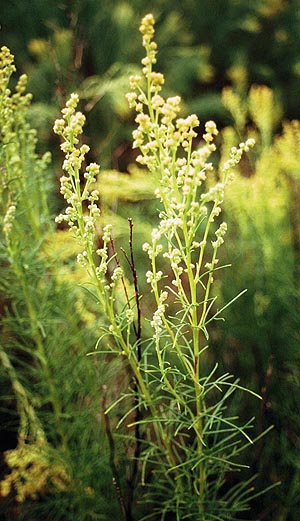Copperweed

Common Name(s):
Copperweed
Scientific Name:
Oxytenia acerosa Nutt.
Scientific Name Synonyms:
Iva acerosa (Nutt.) R.C. Jackson
Symbol:
OXAC4
Description:
Life Span: Perennial
Origin: Native
Season: Cool
Growth Characteristics: Woody based forb, growing 3 to 5 feet tall, with many slender gray stems. The stems can be leafy or leafless. The plant turns copper colored and remains that color through the summer. Copperweed starts growth early in the spring, flowering July and August and reproducing by seed.
Flowers/Inflorescence: Flower heads occur in dense panicles, and flowers are small and turn yellow or orange at maturity.
Fruits/Seeds: Fruit is a hairy achene.
Leaves: Alternate leaves which are divided into long threadlike segments. The upper leaves may be entire.
Ecological Adaptions:
This plant grows in semidesert climate in the summer precipitation areas of southern Utah. It is most likely to be found along streambeds and gullies with extra moisture.
Soils: It is usually on soils high in salt.
Associated Species: Rabbitbrush, alkali sacaton, ticklegrass, tamarisk, and shadscale.
Uses and Management:
Cattle or sheep seldom eat Copperweed. They may be poisoned by feeding on this plant when other feed is scarce. Cattle are more likely to eat this plant in the fall when they are being trailed. Sheep and elk are occasionally poisoned by consuming dry leaves in the fall or winter. Copperweed is poisonous at all times, but is more toxic at maturity. All parts of the plant are equally toxic. Symptoms of poisoning include dullness, weakness, and coma followed by death without a struggle.
Some cases of skin irritation in humans have been reported from contact with this plant.

